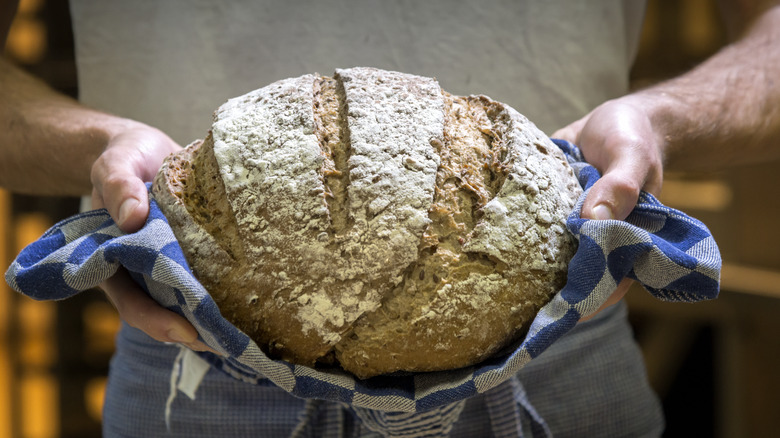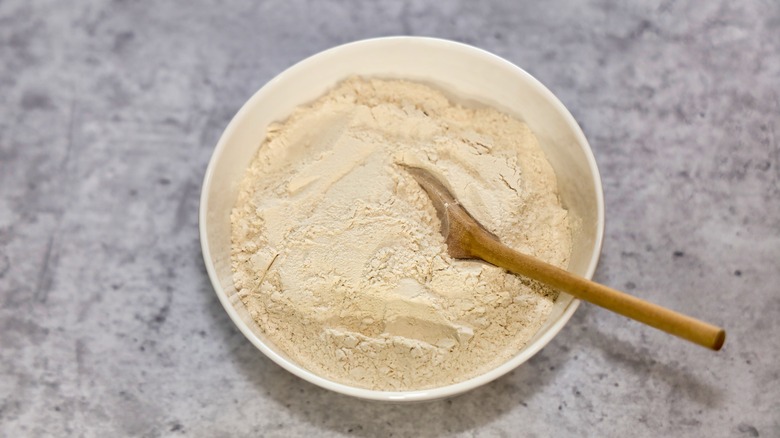Gluten May Be The Key To Fixing Your Crumbly Homemade Bread
For such a universally popular and beloved food, bread can be a frustrating mystery when you actually try to bake it. Follow the recipe exactly and your loaf can still end up flat as a pancake, too dense, too crumbly, or have a host of other problems. Despite containing only three ingredients, flour, water, and yeast, in its most basic form, the complex interactions happening behind the scenes are what make bread challenging, and also what make it difficult to diagnose what the mistake was. It also doesn't help that one problem can often have multiple possible causes, some of which can be tied to one another. That's usually the case with crumbly bread and gluten.
Gluten is the essential ingredient that holds your bread together and crumbly is usually a sign you don't have enough of it. Gluten is not something that flour has in its unaltered state, it is only formed when you add water which helps link the proteins in flour together. Kneading dough helps the gluten strands that have formed combine, creating a larger network that gives bread its structure and allows it to trap air without breaking. Generally speaking, the more gluten that is present and developed, the stronger your dough will be, which means it can expand into those nice soft webs of bread instead of getting crumbly. Depending on your recipe and how you made your bread, adding more gluten to fix a crumbly texture can take a couple of different forms.
Ways to add gluten to your bread
The first problem you might have with crumbly bread is the wrong flour. Different types of flour have higher or lower levels of protein, which affects how much gluten will be formed. Bread flours often have a higher protein level so they will form more gluten and a stronger structure. All-purpose flours usually have a medium level, and protein levels can even vary by brand for the same style. Switching to a bread flour with 11% protein or higher (the levels are often listed in percentages somewhere on the bag), can be one solution to crumbly bread.
If you'd prefer to keep using the same type of flour, which is common if you want to keep the flavor of low-protein options like whole wheat or rye, you can try adding vital wheat gluten, a natural flour product that is essentially concentrated gluten removed from wheat kernels. This can up the gluten contents of your bread without changing other parts of the recipe. Adding a tablespoon for every 2 cups of flour can significantly improve the strength and structure of bread.
Finally, you might add more water to your dough, or knead it more. Since water and agitation are how gluten forms in flour you may not be developing it enough, even if your flour has plenty of protein. Bread really can go wrong in so many ways.

